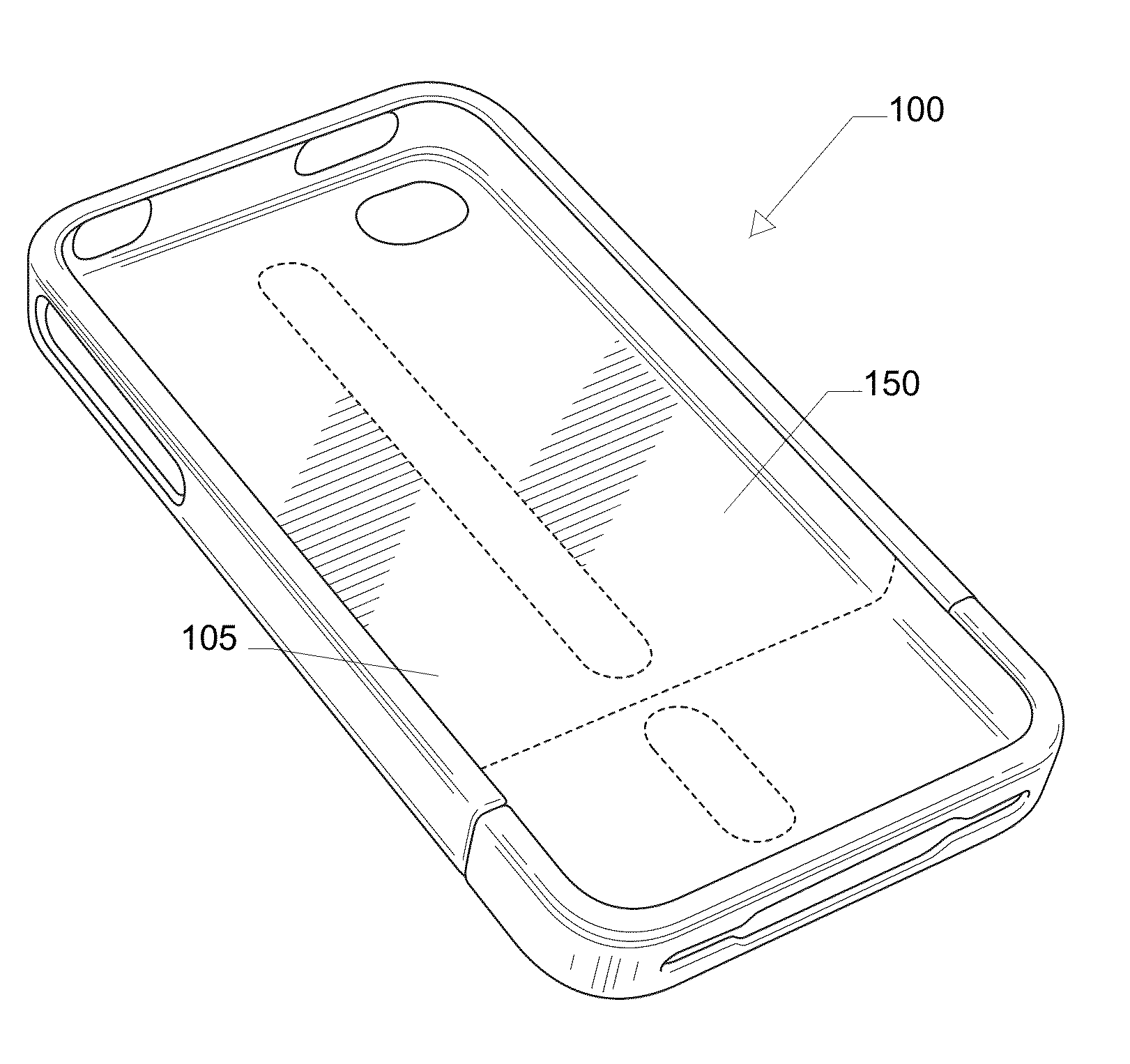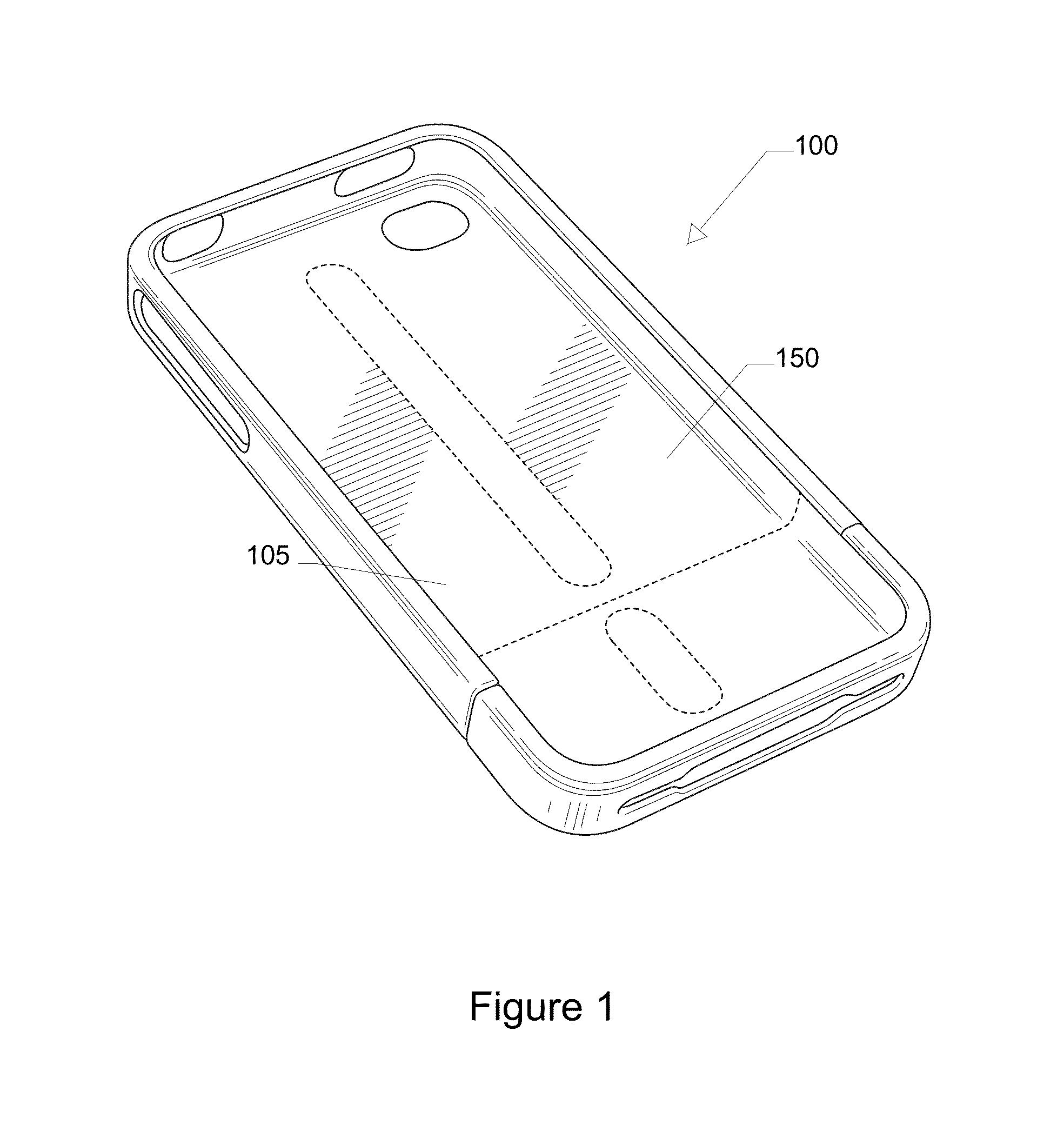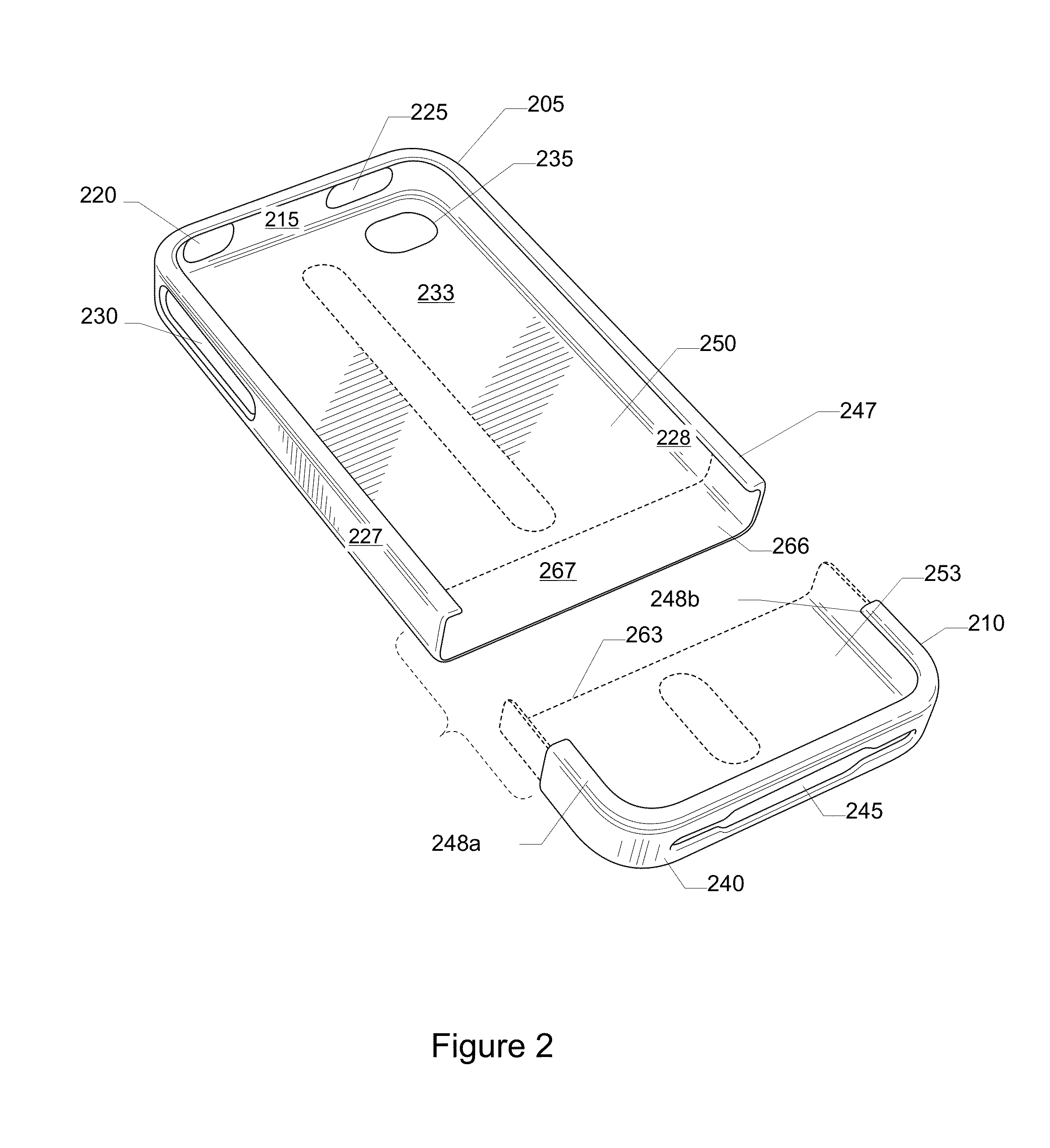Case for portable electronic device
a portable electronic device and case technology, applied in the direction of casings/cabinets/drawers, casings/cabinets/drawers, instruments, etc., can solve the problems of reducing and affecting the functionality of the devi
- Summary
- Abstract
- Description
- Claims
- Application Information
AI Technical Summary
Benefits of technology
Problems solved by technology
Method used
Image
Examples
first embodiment
[0095]FIG. 6D shows the back opening. A case having this back opening may be referred to as an opaque case with a pill-shaped hole. This back opening shape may be described as an oval or a pill-shaped hole and may be similar to the back opening shown in FIGS. 6A-6B.
second embodiment
[0096]FIG. 6E shows a back opening 640 for a case. This case may be referred to as an opaque case with an egg-shaped hole. The shape of this back opening may be described as egg-shaped, pear-shaped (e.g., pyriform), or teardrop-shaped. The shape may be described as a triangle with rounded corners or a sector with rounded corners and ends. In a specific implementation, this back opening has a length of about 13 millimeters and a width of about 9 millimeters.
[0097]In this specific implementation, the shape of the back opening includes a first line 642, second line 644, first arc 646, and second arc 648. The first arc is connected to ends of the first and second lines. The second arc is connected to opposite ends of the first and second lines. The first arc is different from the second arc. For example, a size of the first arc may be greater than the second arc, the first arc may have a greater degree of curvature than the second arc, the first arc may have a greater radius than the se...
third embodiment
[0104]FIG. 6F shows a back opening 650 for a case. The shape of this back opening may be described as keyhole-shaped. This case may be referred to as an opaque case with combined holes. In a specific implementation, this back opening has a length of about 13 millimeters and a width of about 9 millimeters.
[0105]The shape of this back opening includes straight lines and curves. In this specific implementation, the shape of the back opening includes a first line 652, second line 654, first arc 656, and second arc 658. The first arc is connected to ends of the first and second lines. The second arc is connected to opposite ends of the first and second lines. The first arc is different from the second arc.
[0106]In this specific implementation, a length of the first arc is greater than a length of the second arc. The first arc, second arc, or both may be portions of a circle, oval, or ellipse. An arc or a portion of an arc may have constant radius, an increasing radius, or a decreasing ra...
PUM
 Login to View More
Login to View More Abstract
Description
Claims
Application Information
 Login to View More
Login to View More - R&D
- Intellectual Property
- Life Sciences
- Materials
- Tech Scout
- Unparalleled Data Quality
- Higher Quality Content
- 60% Fewer Hallucinations
Browse by: Latest US Patents, China's latest patents, Technical Efficacy Thesaurus, Application Domain, Technology Topic, Popular Technical Reports.
© 2025 PatSnap. All rights reserved.Legal|Privacy policy|Modern Slavery Act Transparency Statement|Sitemap|About US| Contact US: help@patsnap.com



